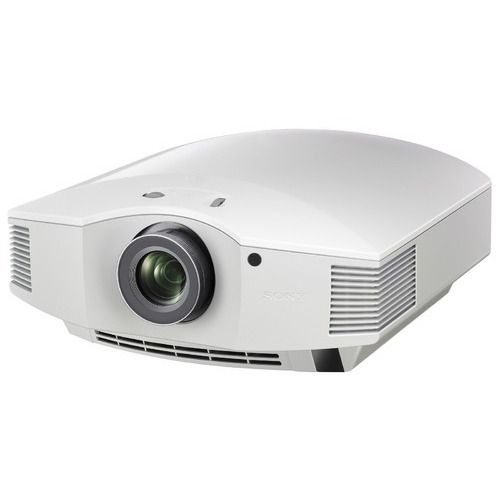Decoding the Essentials of Computer Projectors: A Comprehensive Guide
Introduction
In the digital era, technology has become an integral part of our everyday lives. One technology that has witnessed immense growth and innovation is the computer projector. Let's dive deep into the world of computer projectors, understand their essence, their types, their significance in today's world, their practical applications, and tips to keep in mind while buying your ideal projector.
What is a Computer Projector?
A computer projector, also referred to as a video or digital projector, is a modern marvel that originates from the traditional overhead projector. This device essentially augments the computer display and projects it onto a sizeable screen or wall. To paint a more vivid picture:
• Connecting Device: A computer projector is essentially a conduit that links your computer to display a larger view on another surface.
• The Way it Functions: This device seizes the video output emerging from a computer and creates a larger depiction on a different visual platform, providing a sizable and clear view.
• Multifaceted Application: The wide usage of these projectors spans across various fields, primarily academic and business sectors, making presentations, lectures, or demonstrations an easy task.
• Entertainment Utility: The computer projector isn't just confined to work and educational environments; they're also utilized for entertainment purposes like home cinemas and gaming by creating a mini-theater-like experience.
• The Amplifying Tool: In essence, a computer projector is a tool that amplifies visuals, displaying them on a much grander scale than is otherwise possible on a conventional computer or laptop screen.
In short, a computer projector acts as a remarkable tool, fostering a visually engaging and enhanced viewing experience in different areas and scenarios.
Understanding the Different Types of Computer Projectors
There has been a continuous evolution in the field of projectors since they were first innovated. The technology used to create a projector and the differing purposes they serve have led to the development of four main types of computer projectors. Below, we explore each of them in detail:
1. LCD (Liquid Crystal Display) Projectors: These projectors utilize three LCD panels for creating images. Each panel is responsible for handling different colors, which contributes to their color accuracy and detailed image quality. They are an excellent choice for presentations involving high-quality static images.
2. DLP (Digital Light Processing) Projectors: Unlike LCDs, DLP projectors use microscopic mirrors to create images. They offer high contrast and pixel density, making them ideal for movie screenings where motion blurring could compromise the viewing experience.
3. LED (Light Emitting Diode) Projectors: These projectors adopt LED technology, making them light, portable, and durable. While LEDs might not be as bright as their counterparts, their extended lifespan ensures they are definitely worth considering.
4. LCoS (Liquid Crystal on Silicon) Projectors: This projector type combines the advantages of both LCD and DLP technology. While they may be a bit pricey, if you're looking for the highest resolution and image quality, LCoS projectors are the best choice.
Understanding these different types of projectors can guide you towards the right choice based on your specific needs and desires, be it for business, education, or entertainment.

Why are Computer Projectors Crucial in Today's Digital World?
Approximately 250 words
In a world that is becoming increasingly digital, computer projectors have earned their place as indispensable technological tools. Here's why:
- Facilitates Effective Communication: At the heart of their rising importance is their ability to enhance communication. Whether for professional use, such as business presentations, or classroom learning - computer projectors make the communication of ideas visually engaging and clearer.
- Business Sector - Projectors serve as central units during business meetings, creating a conducive atmosphere for sharing ideas and strategies. They convert complex data into easy-to-understand graphical presentations, making interaction more efficient.
- Educational Sector - From classroom lectures to seminars, projectors have made lessons interactive and visually appealing. They aid in the explanation of challenging concepts, ensuring a more comprehensive understanding for students.
- Enhancements to Home Entertainment: Projectors have also permeated the domestic sphere. They are transforming living rooms into personal theaters, delivering a truly immersive cinematic experience.
- Growth in Popularity - a Stat to Ponder: Given its vast benefits, it's not surprising that the projector market is forecast to attain a valuation of USD 9.56 billion by 2026, according to a report by Fortune Business Insights.

In a nutshell, computer projectors' significance continues to escalate sharply as they find novel applications in various industries. By making content more visual, they are shaping communication, education, and entertainment. Thus, they are not just tools, but rather vital fixtures of our digital age.
Practical Applications of Computer Projectors
Computer Projectors serve an array of practical applications across myriad sectors. Their versatility widens their reach beyond the traditional business and education fields to more varied environments such as museums and home entertainment. Here's an exploration of just how versatile computer projectors can be:
- Business: In entity-related environments, computer projectors act as a vital tool for training sessions, team meetings, and presentations. They can convert complex datasets into easily understandable visual formats, making corporate dealings efficient and effective.
- Education: Educational institutions heavily rely on projectors for lectures and seminars. Complex lessons can be simplified using visuals and interactive sessions, thereby enhancing the overall teaching-learning experience.
- Public Libraries and Museums: These establishments use computer projectors for public information and interactive displays. Notably, museums employ them for exhibitions to provide visitors with a high-quality immersive experience.
- Home Entertainment and Gaming: Computer projectors can transform any space into a home theatre or a high-end gaming zone. They bring movies, TV series, and video games to life with a big-screen experience that regular televisions cannot offer.
In a nutshell, computer projectors convincingly demonstrate their multifunctionality and utility across a range of sectors. Their applications are as diverse as their settings, making them an integral feature of today's tech-infused world. Regardless of whether it's a corporate boardroom, a university lecture theatre, a bustling public library, or a cozy home, computer projectors bring visuals to life, thus facilitating communication and entertainment.
Purchasing Your Ideal Computer Projector: What Factors to Consider?
In the voyage of buying your ideal computer projector, several factors come into play, each deserving your thoughtful consideration. Every element adds up to either optimize or diminish your experience. Here we highlight various parameters that should be part of your checklist before making a purchase:
1. Resolution: Higher resolution equals sharper image. Essential for those intricate presentation graphs or that movie night with friends. Your projector's resolution should, preferably, match your computer's.
2. Brightness: Measured in lumens, brightness determines how vivid the visuals are. Home cinema would require around 2000-3000 lumens, while a well-lit conference room might necessitate above 3500 lumens.
3. Contrast Ratio: It's the difference between the brightest white and the darkest black. A high contrast ratio ensures a deep, rich black, and a crisp, radiant white.
4. Throw Ratio: It affects the size of the image when the projector is at a certain distance from the screen. Ensure it complements the size of your room.
5. Portability: If your projector needs to travel with you frequently, it’s worth investing in a more compact model.
6. Life Expectancy of Lamp: Projector lamps aren't eternal. Check the lamp life expectancy, typically quoted in hours. You can expect somewhere in the range of 1,500 to 6,000 hours.
Remember, these parameters may require a balancing act. For instance, there may be a trade-off between brightness and lamp life. Consequently, your ideal projector hue would be the one striking a balance aligning with your specific needs.
* Always evaluate your specific needs before purchasing.
* Consider the environment where the projector will be used – the size of the room and ambient light levels.
* Higher doesn't always mean better; identify what’s a "nice-to-have" and what’s essential.
* Always compare models and read reviews from trusted sources.
Deciding to buy a computer projector is easy, but selecting the one that's perfect for you is a process that should be thought out carefully. Make your decision wisely by taking the above points into account to ensure a high-quality visual experience.
Conclusion
To summarize, a computer projector is a staple in modern-day life, making communication visually appealing and effective. Understanding its types, applications, and purchasing factors can help individuals and organizations make an informed decision while buying. As technology continues to advance, we can expect projectors to deliver even better performance in the coming years.
Related FAQs about what is a computer projector
What are the common issues with computer projectors, and how can they be troubleshooted?
Some common issues include; poor image quality, connectivity problems, projector overheating, and lamp issues. Troubleshooting primarily involves checking for loose connections, ensuring the projector isn't overheating, adjusting the focus or resolution, and also, regular maintenance can solve most issues.
How are computer projectors revolutionizing business presentations?
Computer projectors are transforming business presentations by recreating a dynamic, interactive environment. They allow complex data representation in an easily understandable way, creating visually engaging presentations, enhancing data interpretation, and boosting overall business communication.
What are some tips for using and maintaining a computer projector effectively?
For effective use, align resolution of the projector with the source device, use in a properly lit room, keep it at an optimal distance from the screen. For maintenance, clean the lens regularly, avoid overusing the lamp, ensure proper ventilation and handle with care.







